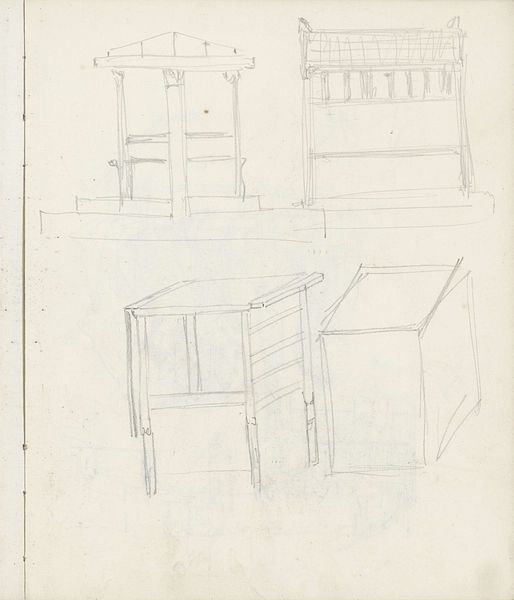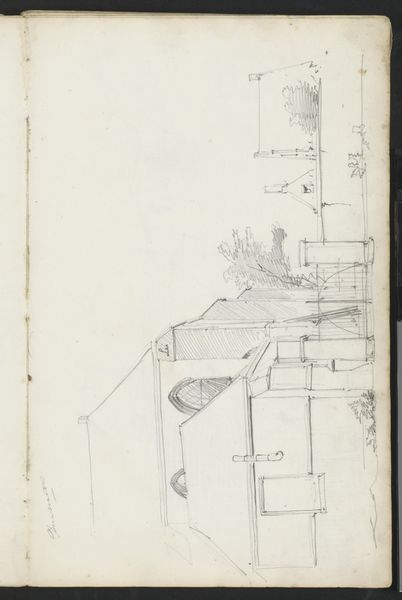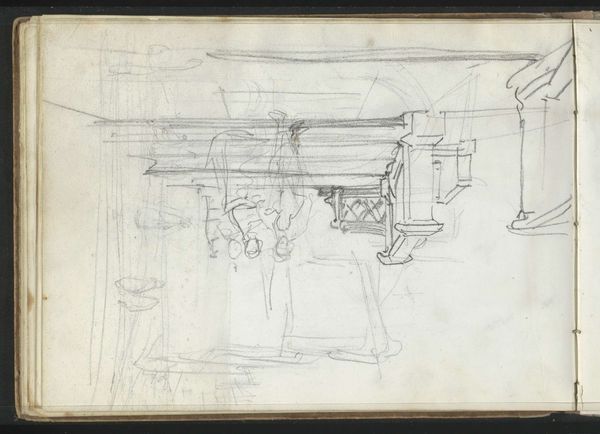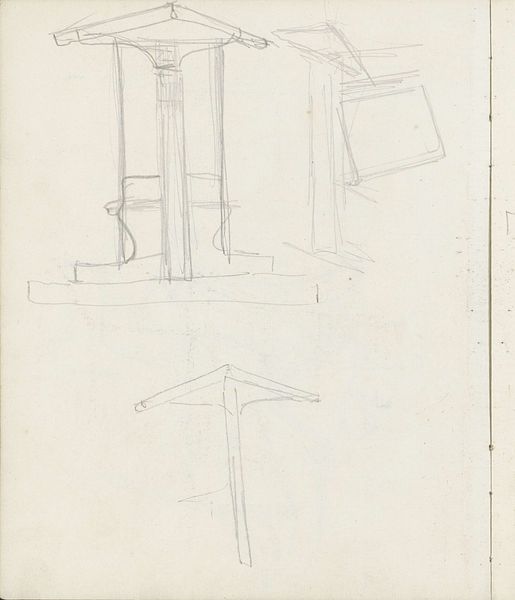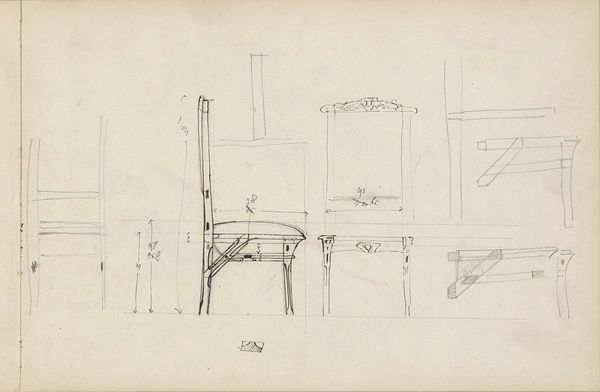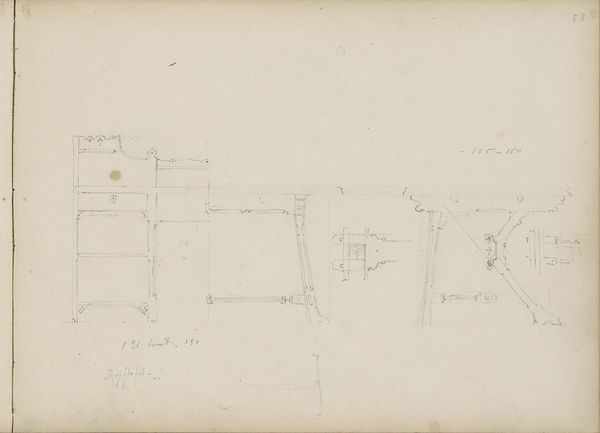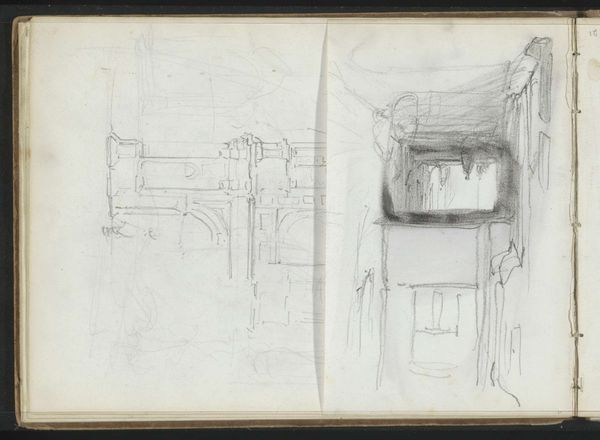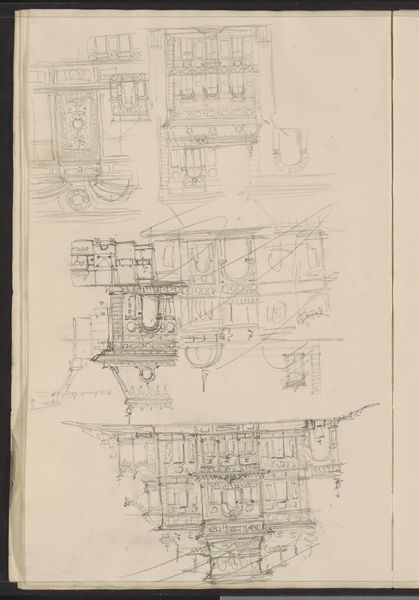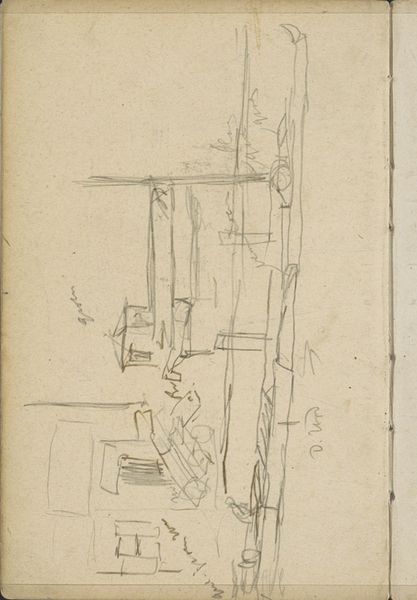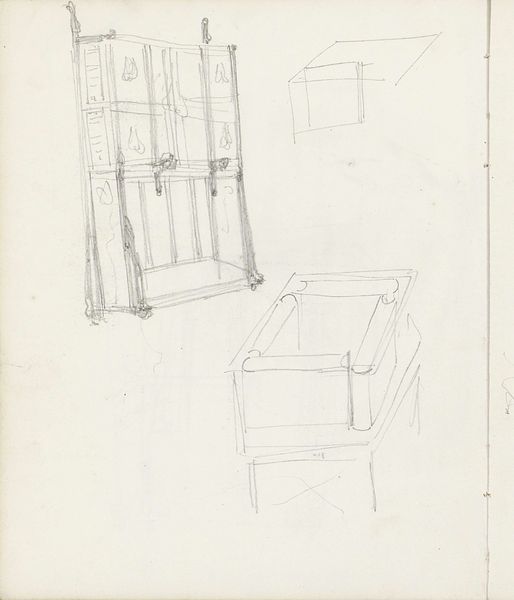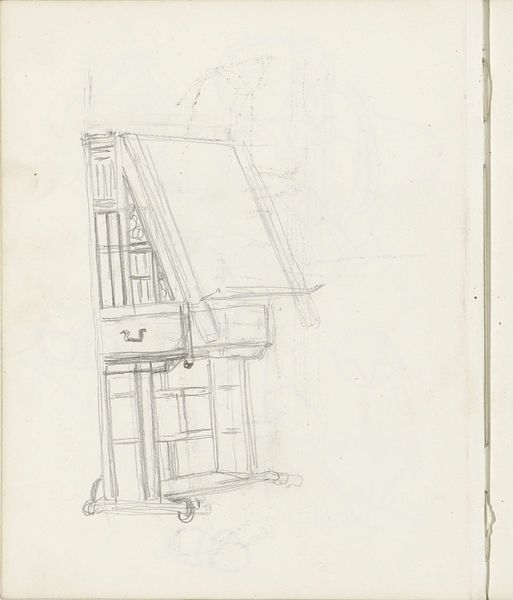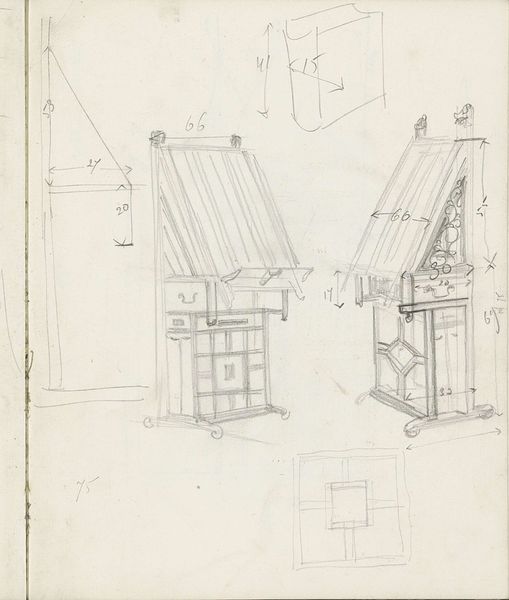
Interieur met wandbetimmering, een bank en schouw c. 1903 - 1904
0:00
0:00
drawing, pencil, architecture
#
drawing
#
geometric
#
pencil
#
architecture drawing
#
modernism
#
architecture
Copyright: Rijks Museum: Open Domain
Curator: Welcome. We’re standing before Carel Adolph Lion Cachet's "Interior with Paneling, a Sofa, and Fireplace," a pencil drawing created around 1903-1904. Editor: Immediately, the lack of precision strikes me. It’s almost like looking at architectural aspirations caught mid-thought, or even some private intimate desire visualized within one's four walls. Curator: Cachet was working during a period of rapid industrialization and urbanization, when the design and decoration of domestic interiors became increasingly important as a means of expressing personal identity and social status. Modernism in full bloom! This drawing showcases architectural and decorative elements prevalent at the time. Editor: And the way the lines scratch at the paper...there's a definite Modernist rejection of classical beauty standards here. The interior shown lacks the soft touch one would assume of a well lived in place: it seems almost like an emotionless design proposal. It has no identity of its own. Do you think it reflects anxiety about the changing roles and relationships produced by Modernity? Curator: Very possibly! It’s crucial to remember that the decorative arts—the creation of spaces people inhabit—have long been associated with gender, especially femininity and domesticity. Cachet seems engaged with similar conversations and actively tries to explore an idea of place outside of old definitions. I can not ignore the social context from which these walls emerge, the art is meant to create belonging and instead gives off emptiness. Editor: Precisely, and let’s not forget about the social and economic disparities reflected, or rather hidden, within such spaces. This drawing captures a very specific type of interior, a privilege unavailable to many, then as now. The stark lines feel not just aesthetic but indicative of those divides. Even the architectural and geometric are political here! Curator: The museum context adds another layer. Exhibiting this drawing invites viewers to contemplate the values and aspirations of the period, the changing meanings of home and privacy, and the role that design plays in shaping our identities and social relations. Editor: I wonder how many visitors, particularly those from marginalized communities, feel represented or alienated by these interiors...or perhaps even activated! I certainly hope this artwork starts important conversations! Curator: It certainly is a great conversation starter. Seeing art with an eye for its history reminds me how crucial these conversations really are. Editor: I’ll say! It brings to question everything, but perhaps it helps rewrite definitions and meanings, and in so doing reconfigure belonging in this very museum!
Comments
No comments
Be the first to comment and join the conversation on the ultimate creative platform.
